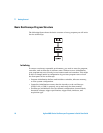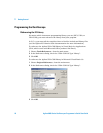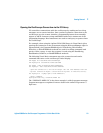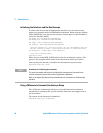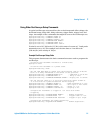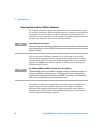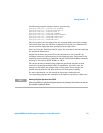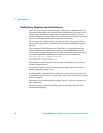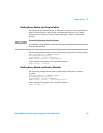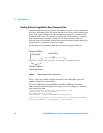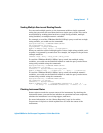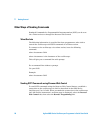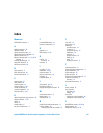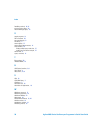24 Agilent 6000 Series Oscilloscopes Programmer’s Quick Start Guide
2 Getting Started
Reading Query Responses from the Oscilloscope
After receiving a query (command header followed by a question mark), the
instrument interrogates the requested function and places the answer in its
output queue. The answer remains in the output queue until it is read or
another command is issued. When read, the answer is transmitted across the
interface to the designated listener (typically a controller).
The statement for reading a query response message from an instrument’s
output queue typically has a format specification for handling the response
message.
When using the VISA COM library in Visual Basic, you use different read
methods (ReadString, ReadNumber, ReadList, or ReadIEEEBlock) for the
various query response formats. For example, to read the result of the query
command :CHANnel1:COUPling? you would execute the statements:
myScope.WriteString ":CHANNEL1:COUPLING?"
Dim strQueryResult As String
strQueryResult = myScope.ReadString
This reads the current setting for the channel one coupling into the string
variable strQueryResult.
All results for queries (sent in one program message) must be read before
another program message is sent.
Sending another command before reading the result of the query clears the
output buffer and the current response. This also causes an error to be placed
in the error queue.
Executing a read statement before sending a query causes the controller to
wait indefinitely.
The format specification for handling response messages depends on the
programming language.



